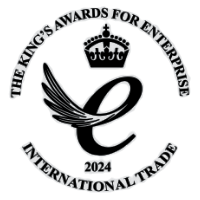One of the most critical stages of making Gusbourne’s sparkling wines is the blending. This is where the spreadsheets come in. And the spider graphs. Following the rigorous blind tasting and grading of the base wines from our most recent harvest, the winemaking team begin the blending process – starting on paper.
“For the first three weeks of January we taste every single component blind,” says Head Winemaker and Gusbourne CEO Charlie Holland. “We make copious notes and score everything scientifically, statistically. Later we refer to all that data – graphs, charts, word clouds – to help us put the blends together.”
Taste, test, craft, perfect
This early data-driven stage is the foundation for the provisional first blends – those showing characteristics that could earmark them as a Gusbourne Blanc de Blancs, Rosé or Brut Reserve. Then over the next month or so, Charlie, along with Master Sommelier Laura Rhys and the wider winemaking team, begin to taste and refine. This is the more cerebral bit, where trained noses, palates and preferences introduce the hand-crafted element of blending.
“We might say OK, this Blanc de Blancs needs a bit of weight,” Charlie explains. “Or this Brut needs a bit more oak. So we fine-tune until we’re happy. Some blends you nail first time, others take weeks to perfect.”
The winemaking team make progress in small, manageable sessions – four flights of five wines per day over about a month. “More than that, you risk losing some of the nuances of the wines." By the end, the Gusbourne team have total confidence in the data and the tastings. The right balance of science and intuition.
“We fine-tune until we’re happy. Some blends you nail first time, others take weeks to perfect.”
What the team are hunting down are fruit, minerality, structure and other characteristics to fit the profile they want for a particular finished wine. “Back on the spreadsheet, we search out the components best suited to, say, our Blanc de Blancs. Sometimes you think Perfect! That really shows the style we’re trying to create. Other times you need to take something out, put something else in. It’s a painstaking process and quite subtle.”
Next-level analysis comes in the descriptors. Wet stone or oyster shell? Lemon or apple? More like pineapple or tarte tatin? And finally structure and texture. What happens to it in the mouth? Is it round, full, weighty? Is the acid balanced? Does it have good length?
The art of the science
Scores are given, and every piece of data gets fed into the computer. The output analyses include spider graph visualisations. And word clouds. “Anytime someone mentions a word, it appears on that piece of paper and the more it’s mentioned the bigger it appears,” says Charlie. “The biggest words jump out and start to define the wine’s profile.”
Wet stone or oyster shell? Lemon or apple?
With the bottles maturing in Gusbourne's cellars, lees-ageing tastings provide another feast of work each January. The team will line up and taste, say, all the Blanc de Blancs 2013-19. They map the evolution and spot what's particular to each year. If one year has a different expression to another, they pinpoint why. Vineyard conditions? How ripe were the grapes? Or in the winery was the difference down to stirring the lees on one but not the other?
It's through this kind of constant evaluation that the winemaking team get to know definitively what each Gusbourne wine should taste like, across vintages. A stylistic vein runs through every different expression of Gusbourne and the team know how to articulate and reproduce it.
“There’s always a lot of intuition and gut feel that goes into blending, but the science helps us to ‘see in the dark’,” Charlie observes. “Each wine has its profile and when it comes to blending you have to try to be scientific in something that isn’t always scientific!”
Explore our wines to taste the skill, craft and hard work that goes into every bottle.
You may also like...
Charlie Holland, Head Winemaker
Why We Blind Taste our Base Wines









